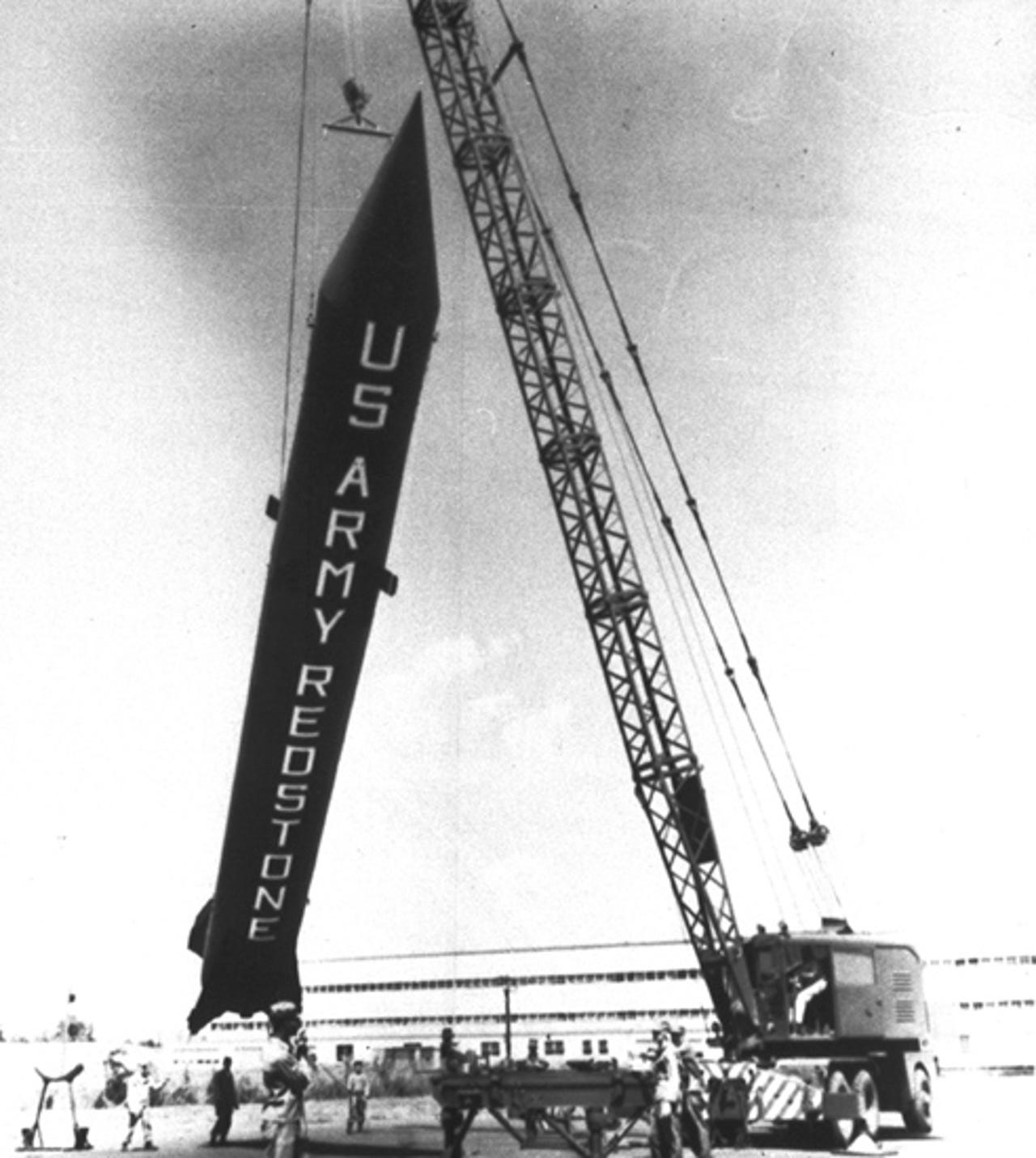Gallery: America's first small step into space - 50 years ago


If Alan Shepard's space flight took place today, it might have ended up on a reality TV show like Mythbusters, Jackass, or even Dirty Jobs. They took a pilot, put him in a funny-looking metalic suit, strapped him into a heavy metal box, attached the box to the top of a guided missile, launched it, and then watched how far it would go.
On May 5, 1961, Alan Shepard was the pilot who became the first American to escape Earth's atmosphere. He spent 15 minutes in space, reached a peak altitude of 116 miles and traveled at a top speed of 5,180 miles per hour.
A Redstone, similar to the one above, was converted from a ballistic missile into the Mercury-Redstone rocket that propelled Shepard into space.
Read Larry Dignan's post about the IT behind Shepard's flight.
To prepare for Shepard's flight, NASA sent this chimp named Ham on a test flight in December 1960. He returned safely but chief rocket scientist Wernher von Braun was not happy with the rocket's performance and went back to the drawing board. Another test in March 1961 cleared the way for Shepard's launch.
Already reeling from being beaten by Russia to the first successful satellite launch, the United States was further shaken by Yuri Gagarin's one-orbit flight on April 12, 1961. Little was know about the flight at the time but details emerged afterward that revealed his adventure was fraught with danger. The final stage of the rocket didn't separate from his capsule until just before reentry so after reaching Earth's atmosphere, Gagarin ejected from the capsule and parachuted to safety.
Alan Shepard was selected to be the first American into space.
Fellow Mercury Astronaut Gus Grissom wishes Shepard good luck as he prepares to enter his spacecraft, Freedom 7.
Freedom 7 was only 11.5-feet tall and 6.2-feet wide.
Shepard in Freedom 7.
The Redstone rocket that propelled Shepard into space rises a few feet above the launch pad. Frequent delays in getting the rocket ready that day forced a common occurance, NASA was forced to innovate. When Shepard had to urinate at one point, a completely unplanned event, he was told to just go.
The 83-foot Redstone rocket was versioned from a missile that was 69-feet tall. The fuel tanks were lengthened.
For comparison, here's the Saturn V rocket liftoff for Apollo 11. The Redstone rocket stood 83-feet high while the Saturn V was 363-feet tall.
Computers and software hadn't been built yet to control the flight of the Redstone rocket so NASA had to manually fire the second and higher stages.
Shepard on launch day. Whereas Gagarin and the chimp Ham had little control of their capsules, Shepard was able to steer somewhat by hand during reentry.
What this was all about - a view of Earth from space. Shepard didn't have a window to see through and had to rely on a periscope. But he was able to identify some features of the Florida coast.
Shepard's flight took him 302 miles into the Atlantic where he was rescued by helicopter.
Shepard returns.
Shepard was upset with NASA, and von Braun in particular, for the delays of his launch that allowed Yuri Gagarin, instead of him, to become the first man into space. However, being second in the space race provided the incentive for President Kennedy, three weeks later, to give the challenge for America to send a man to the moon and back by the end of the decade.
And Shepard went on to become the first man to hit a golf ball on the moon. After the Mercury program he was grounded by Ménière's disease but later surgery allowed him to become commander of Apollo 14 and the fifth man to step on the moon.
Shepard who died in 1998 is remembered by a statue in the U.S. Astronauts Hall of Fame at the Kennedy Space Center.
A native of New Hampshire, Shepard had the McAuliffe-Shepard Discovery Center in Concord, N.H. named after him. It's even got a full size replica of his Redstone rocket out front.